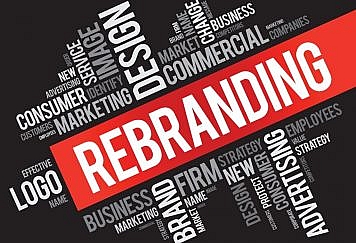Supply Chain Management is a constantly evolving discipline. Due to new technological advancements, the management techniques used by companies have undergone a sea-change.
Today’s industrial leaders use very distinct supply chain management techniques depending on their unique requirements and capabilities.
However, there are basic principles that any new supply chain management business can learn from, such as innovation, end-to-end visibility, and so on.
Supply chain management can make or break a company. This is why its important to implement industry best-practices and constantly keep evolving.
Here are the top ten things which you can learn from industry leaders regarding supply chain management to help your supply chain modeling excel.
Keep Making New Arrangements
Don’t limit yourself to thinking about how you can improve the efficiency of your current supply chain. Your current partnerships and arrangements don’t have to define your supply chain forever.
Remember to keep looking for new opportunities that can make your supply chain faster and more responsive. This will also help you to quickly meet your benchmark targets.
For example, if you find that your supply chain is too costly, then you may consider relocating your supply chains to make them more cost-effective. You can also consider moving your factories to better locations that are more strategic, given your business’s future needs.
Read More: 7 Ways Supply Chains Can Be Made Ready For The Post-Corona World
Implement Better Operating Techniques
Instead of simply focusing on using the latest technology to improve your supply chain performance, also focus on using the best management techniques to help your management team.
The way your supply management team operates can make a big difference in the success of your supply chain operations.
For example, the leading companies in the world, such as Toyota and Lockheed Martin, use a Japanese management philosophy called Kaizen. This philosophy stresses the importance of teamwork, making employees part of the development process, and lean manufacturing.
There are several cutting-edge management techniques for you to choose from and implement according to your specific needs.
Use Analytics
Big data and analytics are unavoidable in almost any field of endeavor these days. However, big data does not help unless you can apply it to make better decisions.
Nowadays, there are advanced analytics and big data tools that you can use to make predictive analysis regarding your supply chain and its demand needs. This type of software has become essential for supply management.
They can predict the result based on the data that they are given. They can also help you reduce supply risk. Further, they can make recommendations to your supply chain process.
Make Your Payments More Efficiently
Nowadays, companies are using corporate cards to efficiently make payments to their suppliers and vendors. Even though consumer-oriented cards such as Google Wallet may be more familiar and widely used, there are B2B variants that are available specifically for business use.
These cards are made by companies such as Visa, MasterCard, and EuroPay. These methods of payment are more secure, as well as faster. They also do away with the need to make detailed invoices for each step. They also reduce the chances of any processing error.
Read More: 13 Things you need to know about Freight Forwarding
Using Artificial Intelligence
In addition to using technology to make predictive analysis, you can also use technology such as artificial intelligence to control and manage business risk.
For example, you can use machine learning, an aspect of artificial intelligence, to extrapolate trends and patterns. These can be tools carved out for specific niches like driver AI. This can help you form a better baseline that reduces the risk of business decisions.
Nowadays, there are platforms such as Avetta, that help you get data regarding the performance history and capabilities of a large number of suppliers.
You can also use this data to find viable partners to complete your supply chain. You can get data regarding their financial health and other parameters to help you make your decisions.
Using Blockchain
Supply chains are long and complex things. The supply chains for the most common products can involve hundreds of companies. Even as products and goods move from one location to another, it can get difficult to keep track of their movements and the details of fleet risk management.
Not just if the goods have moved from the possession of one company to another, but within the same company as well.
However, there is a potential solution in the form of blockchain technology. Blockchain is a kind of distributed ledger. This idea is still in its nascent stage, and no company has effectively applied the idea to solve supply chain issues yet, however, it remains a trend to be watched out for.
Using The Internet Of Things
More productive employees mean better efficiency for the company, and supply chain management is no stranger to productivity issues. Emerging technologies such as the Internet of Things and Augmented Reality can be the solution.
For example, nowadays, there are smart goggles that alert an employee if they are using the wrong bin to classify a product. Internet of Things can help to manage assets in myriad ways.
Scale Technology To Suit Your Needs
Smaller and newer companies are at an advantage compared to larger and more established companies in this regard.
Smaller companies can implement data-driven technologies from the very start, hence, embedding emerging technology into their culture.
They can scale the technology, such as fleet tracker software, as their business grows and demands increase. This can be harder for established companies that may have decades of practice to unravel.
Embedding Sustainability
Nowadays, it is increasingly being accepted that sustainability and profitability are not mutually inclusive. In fact, sustainability is going to be integral to a company’s success.
More and more companies are placing sustainability as one of their top priorities.
Supply chain management teams also need to consider the sustainability of their practices. They should look at the carbon footprint, energy usage, and recycling aspect of their operations. They can also use emerging technology to make their processes more efficient and less wasteful.
Integrating Product Development And Supply Chain
It is no longer possible to develop a product without having a simultaneous look at the potential supply chain.
For a new company, they need to develop their products in close integration with the supply management team so that the end-product can be built quickly and efficiently.
For example, the world’s leading smartphone manufacturers need to come out with new products every few months or in a year.
They have built integrated systems in which supply chain managers are constantly in touch with the development teams so that both aspects are looked after.
Final Thoughts
Supply chain management can be a highly rewarding discipline, and it is one that the world needs right now.
Implementing the latest techniques to your supply chain processes can help you build a much more sustainable business that can also scale quickly.





